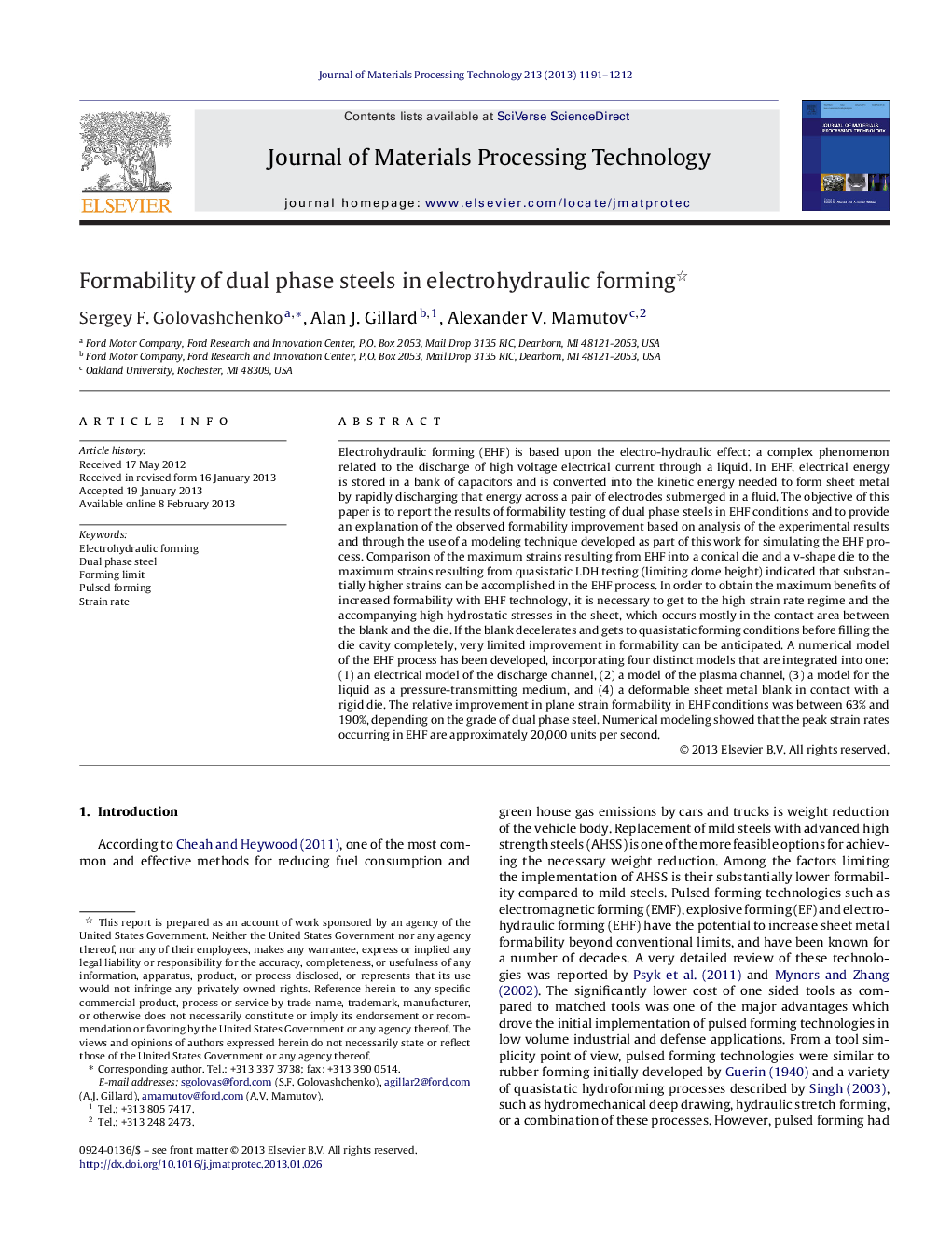| کد مقاله | کد نشریه | سال انتشار | مقاله انگلیسی | نسخه تمام متن |
|---|---|---|---|---|
| 795887 | 902748 | 2013 | 22 صفحه PDF | دانلود رایگان |

Electrohydraulic forming (EHF) is based upon the electro-hydraulic effect: a complex phenomenon related to the discharge of high voltage electrical current through a liquid. In EHF, electrical energy is stored in a bank of capacitors and is converted into the kinetic energy needed to form sheet metal by rapidly discharging that energy across a pair of electrodes submerged in a fluid. The objective of this paper is to report the results of formability testing of dual phase steels in EHF conditions and to provide an explanation of the observed formability improvement based on analysis of the experimental results and through the use of a modeling technique developed as part of this work for simulating the EHF process. Comparison of the maximum strains resulting from EHF into a conical die and a v-shape die to the maximum strains resulting from quasistatic LDH testing (limiting dome height) indicated that substantially higher strains can be accomplished in the EHF process. In order to obtain the maximum benefits of increased formability with EHF technology, it is necessary to get to the high strain rate regime and the accompanying high hydrostatic stresses in the sheet, which occurs mostly in the contact area between the blank and the die. If the blank decelerates and gets to quasistatic forming conditions before filling the die cavity completely, very limited improvement in formability can be anticipated. A numerical model of the EHF process has been developed, incorporating four distinct models that are integrated into one: (1) an electrical model of the discharge channel, (2) a model of the plasma channel, (3) a model for the liquid as a pressure-transmitting medium, and (4) a deformable sheet metal blank in contact with a rigid die. The relative improvement in plane strain formability in EHF conditions was between 63% and 190%, depending on the grade of dual phase steel. Numerical modeling showed that the peak strain rates occurring in EHF are approximately 20,000 units per second.
► The relative improvement in plane strain formability in EHF was between 63% and 190%.
► The peak strain rates occurring in EHF were found to be about 20,000/s.
► The true benefits of EHF technology are only available at higher strain rates.
► Two distinct failure modes were observed, reflecting different forming limits.
► A numerical model of the EHF process was successfully developed.
Journal: Journal of Materials Processing Technology - Volume 213, Issue 7, July 2013, Pages 1191–1212